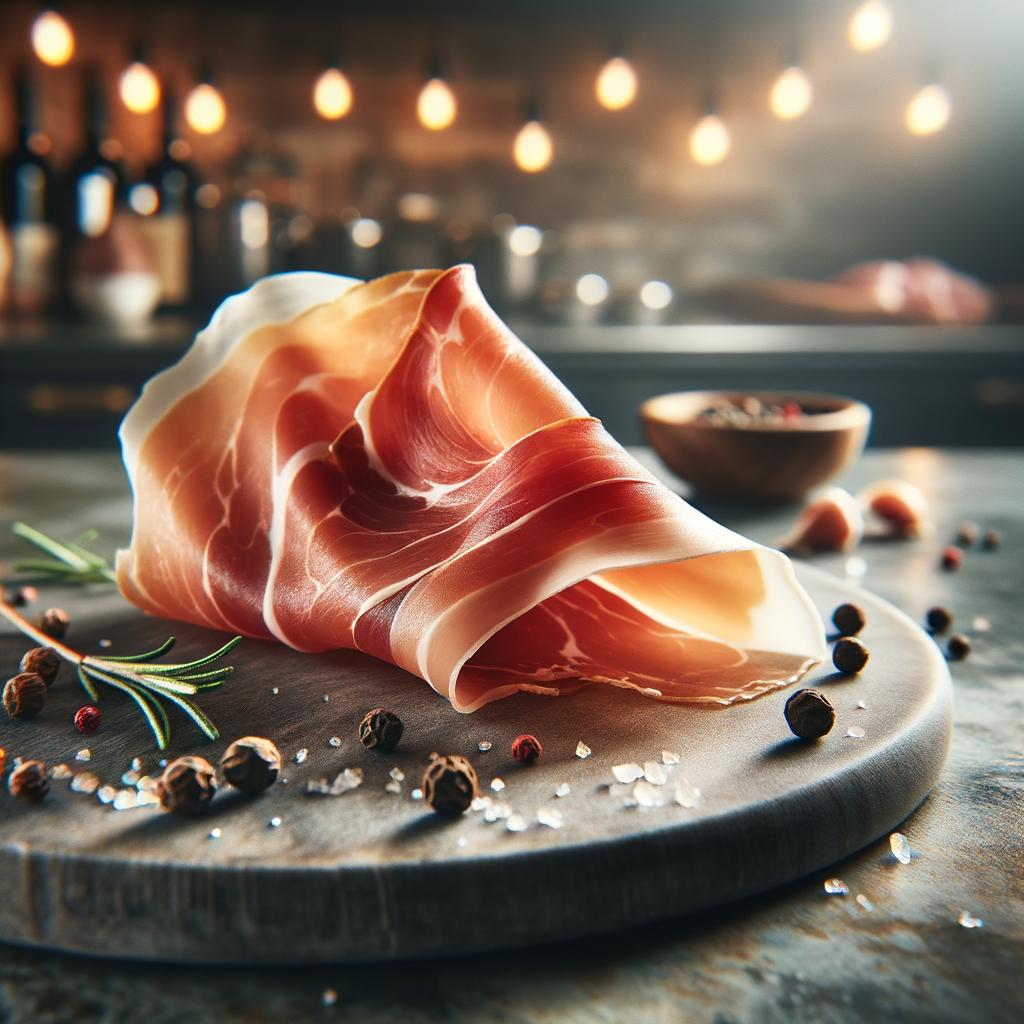Prosciutto

Description
Prosciutto is a captivating ingredient that is often considered the epitome of Italian culinary tradition. This glorious meat is characterized by its deep rose color, marbled with rich, creamy fat, creating a mosaic of flavors that is truly a feast for the senses. The texture of prosciutto is velvety, melting in your mouth with a complexity that is both sweet and savory. Its flavor is a delicate balance of saltiness and sweetness, with a hint of nuttiness that lingers on the palate. What sets prosciutto apart from other cured meats is its long, meticulous curing process, often taking up to two years, which imparts a unique depth of flavor and aroma that is simply unparalleled.
Primary Uses
Prosciutto is a versatile ingredient that is used in a plethora of culinary applications. It is often served thinly sliced as part of an antipasto platter, wrapped around melon or figs, or layered on pizza or sandwiches. In cooking, it can be used to add a savory depth to pasta dishes, risottos, and salads. Beyond the kitchen, prosciutto holds a significant cultural value in Italy, where it is celebrated in festivals and is a symbol of regional pride. It is also believed to have medicinal properties, with old Italian folklore suggesting its consumption to aid digestion.
History
The history of prosciutto is steeped in tradition, dating back to the Roman Empire, where it was considered a delicacy. The art of curing pork was a necessary skill in those times, and the method of air-drying meat, which is the essence of prosciutto, was born out of necessity. Over the centuries, the process has been refined and perfected, transforming it into the gourmet food we know today. The name "prosciutto" itself comes from the Latin "perexsuctum," meaning "dried thoroughly," reflecting its historical roots. The popularity of prosciutto has grown over time, and it is now enjoyed worldwide, with each region in Italy boasting its unique version of this beloved delicacy.
Nutritional Information
Prosciutto is not just a feast for the taste buds; it is also packed with nutritional benefits. It is a good source of protein and provides essential minerals like zinc, iron, and selenium. It also contains B vitamins, particularly B1, B2, and B3, which are crucial for energy production and cell health. However, like many cured meats, prosciutto is high in sodium, so it should be consumed in moderation. Compared to other cured meats, prosciutto has a slightly higher fat content, which contributes to its rich flavor and silky texture. Despite this, its nutritional profile is well-balanced, making it a worthy addition to a healthy, varied diet.

